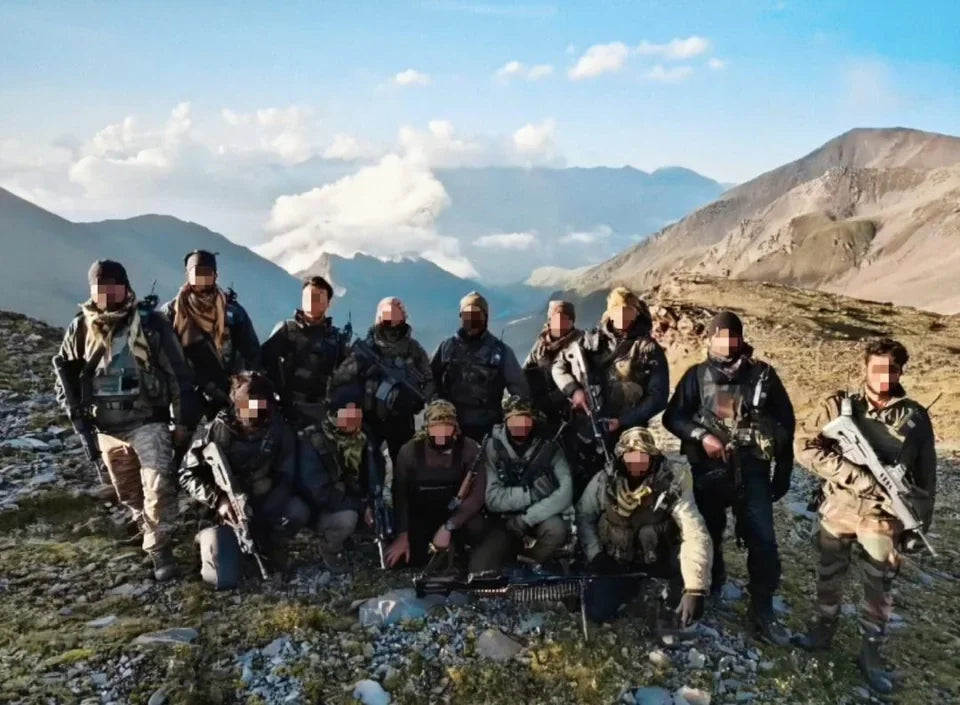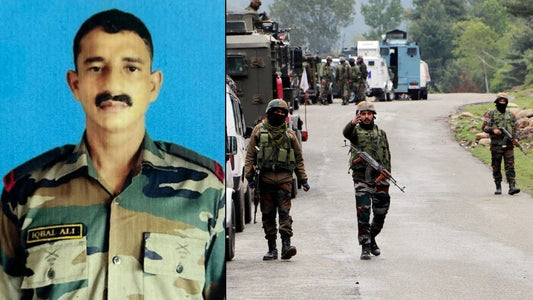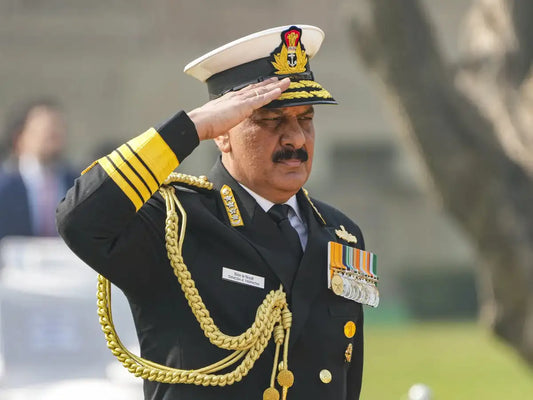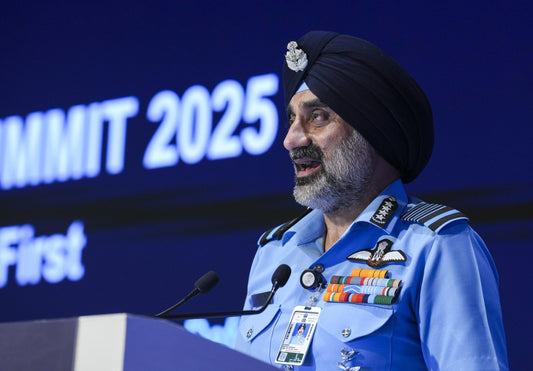Exploring the Legacy and Roles of India's PARA Special Forces Battalions

The PARA Special Forces (Para SF) of the Indian Army stand as a testament to the highest levels of military prowess and strategic acumen. These elite units are adept at managing diverse challenges, from urban hostage crises to leading counter-insurgency operations in challenging mountainous terrains. Their versatile capabilities are crucial to the demands of modern warfare. The history and operations of the PARA SF battalions have profoundly influenced India's military strategies, and an exploration of their nicknames, roles, and legacy reveals their significant contributions to national security.
Historical Context
The inception of Indian Special Forces dates back to the British Raj, when the necessity for an elite fighting force became evident. After gaining independence, the Indian Army underwent transformations that expanded the roles of special forces to address internal and external threats. The PARA SF units, with their distinct training and operations, have solidified their status as an essential component of the Indian Army.
The evolution of the PARA SF battalions involved numerous developments over the years, culminating in a robust training protocol that meets the demands of modern warfare. The first elite unit, 1 Para SF, originally established in 1761, initiated a tradition of tactical excellence that continues across various battalions today.
Overview of PARA SF Battalions
The PARA SF battalions are renowned for their specialized roles, each tailored to particular combat environments. The table below provides an overview of their nicknames, specific roles, and establishment years:
| Battalion | Role | Nickname | Establishment Year |
|---|---|---|---|
| 1 Para SF | Urban Warfare | Red Devils/Pratham's | 1761 / 1978 |
| 2 Para SF | Mountain Warfare, Counter Insurgency | Predators | 1797 / 2000 |
| 3 Para SF | Desert Warfare | Russell's Viper | 1813 / 2002 |
| 4 Para SF | Counter Terrorism, Counter Insurgency | Mighty Daggers/Four of the North | 1961 / 2003 |
| 5 Para SF | Mountain Warfare, Counter Insurgency | Batalik | |
| 6 Para SF | Counter Terrorism, Counter Insurgency | Sakht Para | |
| 7 Para SF | Counter Terrorism, Counter Insurgency | SE7EN | |
| 9 Para SF | Counter Terrorism, Counter Insurgency | Mountain Rats/Ghost Operators/Pirates | 1966 |
| 10 Para SF | Desert Warfare, Counter Insurgency | Desert Scorpions | 1967 |
| 11 Para SF | Jungle Warfare, Counter Insurgency | Vipers | 2011 |
| 12 Para SF | Jungle Warfare, Mountain Warfare, Counter Insurgency / Counter Terrorism | Dirty Dozens | 2011 |
| 13 Para SF | Counter Terrorism, Counter Insurgency | Thunderbolts | |
| 21 Para SF | Jungle Warfare, Mountain Warfare, Counter Insurgency / Counter Terrorism | Waghnaks | 1985 / 1996 |
| 23 Para SF | Jungle Warfare | Devil’s Own | |
| 29 Para SF | Counter Insurgency / Counter Terrorism | Airborne Rajputs |
Key Roles and Operational Environments
Urban Warfare
The 1 Para SF, also known as the Red Devils, is specialized in urban warfare, dealing with hostage rescues, urban combat situations, and close-quarters battles. These forces undergo extensive training to ensure precision in controlled environments where the minimization of collateral damage is critical.
Mountain Warfare
2 Para SF and 5 Para SF are dedicated to mountain warfare and counter-insurgency efforts. With India featuring numerous mountainous regions, these battalions are trained rigorously to conduct operations in high-altitude and difficult terrains, proving vital during conflicts along the country's northern borders.
Desert Warfare
The 3 Para SF and 10 Para SF, referred to as the Russell's Viper and Desert Scorpions respectively, specialize in operations within desert environments. These units excel in tackling challenges posed by extreme temperatures and visibility issues characteristic of desert warfare.
Jungle Warfare
Focusing on jungle warfare, 11 Para SF (Vipers) and 23 Para SF (Devil’s Own) are trained to handle the unique challenges such as dense foliage and unpredictable terrains, emphasizing stealth, ambush tactics, and adaptability to the environment.
Counter Terrorism
Units like 4 Para SF (Mighty Daggers) and 7 Para SF (SE7EN) are specifically trained for counter-terrorism missions. This expertise requires acute situational awareness, intelligence gathering, and tactical execution to effectively neutralize threats.
Legacy of PARA SF Battalions
The PARA SF units have achieved legendary status due to their courageous and daring missions. They have participated in numerous significant operations, shaping both military and civil history in India.
- Surgical Strikes: PARA SF units have been crucial in surgical strikes across the Line of Control (LoC) following terrorist attacks, highlighting their tactical effectiveness and strategic importance.
- Operation Black Tornado (2008): During the 26/11 Mumbai attacks, the 1 Para SF played a vital role in confronting terrorists in the Taj Mahal Palace Hotel, demonstrating their expertise in urban warfare.
- Counter Insurgency Missions: 9 Para SF, also known as Pirates, have been vital in counter-insurgency missions in Kashmir, operating in extreme conditions to dismantle terror networks.
- Operation All Out: Significant operations were conducted by 6 Para SF in Jammu and Kashmir, focusing on eradicating terrorist hideouts to enhance local security.
Challenges and Solutions
Despite their capabilities, PARA SF battalions face challenges that must be addressed to maintain their superiority.
- Resource Allocation: Ensuring adequate funding for training, modernization, and equipment is crucial. Dedicated budgets focusing on research and development in combat technology are necessary for maintaining their advanced status.
- Coordination with Other Forces: Seamless collaboration with intelligence and local military units is imperative. Regular joint exercises can enhance inter-force relations and operational effectiveness.
- Psychological Resilience: The nature of special operations can mentally strain personnel. Implementing robust mental health support systems through counseling can help soldiers manage the psychological impact of high-stakes missions.
Future Trends and Predictions
As warfare continues to evolve, PARA SF battalions must adapt to emerging challenges.
- Integration of Technology: The future of special operations will heavily rely on advanced technologies such as drones, surveillance systems, and AI, which provide significant advantages in intelligence and real-time decision-making during missions.
- Cyber Warfare: Increasing cyber threats necessitate a stronger focus on cyber security and counter-cyber operations within special forces training.
- Partnerships with Global Forces: Collaborating with international special operations forces can lead to knowledge exchange and tactical innovation, enhancing capabilities through shared experiences.
Conclusion
The PARA Special Forces have established themselves as a formidable force within India's military framework. Each battalion, with a distinct nickname and specific combat role, embodies a legacy of valor, resilience, and exceptional skills. Their impact extends beyond military engagements, symbolizing a commitment to national security and a robust India.
As India confronts complex security challenges, the PARA SF battalions' role remains indispensable. They aren't merely trained soldiers; they are the guardians of national interests, constantly evolving to meet the challenges of modern warfare. Their legacy inspires future generations, securing the spirit of excellence within each battalion. Recognizing and understanding their contributions help us appreciate the intricate mechanisms of our defense and the relentless spirit that strengthens it.
Thus, ongoing support, innovation, and recognition of these elite battalions are vital in fortifying national security and fostering a strong defense system for the future.




















1 comment
“Taj Mahal ek amar kala aur mohabbat ka sangam hai.”
URL-https://www.tajmahaltourpackage.in/